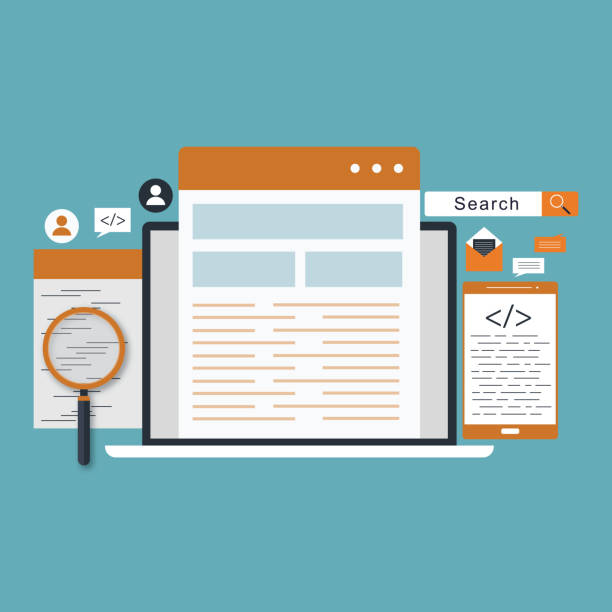Introduction to SEO-Optimized Website Design and Its Importance

In today’s digital world, merely having a website is not enough; your website must be discoverable.
This is where the concept of #SEO_Website_Design comes into play.
#SEO, or Search Engine Optimization, is the process that prepares your website for higher rankings in search results like Google.
Imagine you have a beautiful store, but no one knows it exists; the same applies to an un-optimized website.
SEO is not just about keywords; it also includes technical, content, and user experience aspects.
SEO-optimized website design means implementing these principles from the very beginning of website creation, rather than trying to optimize it after completion.
This proactive approach saves time and money and leads to better results.
An SEO-optimized site naturally attracts more organic traffic, which is often higher quality and more relevant to your business.
This directly impacts your sales growth, brand credibility, and return on investment.
Understanding these educational concepts is crucial to properly prepare your website for online success.
These initial explanations help you understand the importance of SEO-optimized website design and why you should pay special attention to it from the start.
Next, we will delve into various aspects of this topic and introduce practical steps.
Is your current e-commerce website not generating the sales you expect?
Rasaweb is an expert in professional e-commerce website design!
✅ An attractive and user-friendly site aimed at increasing sales
✅ High speed and security for an ideal shopping experience⚡ Get a free consultation for online store design with Rasaweb!
Key SEO Principles in Website Design
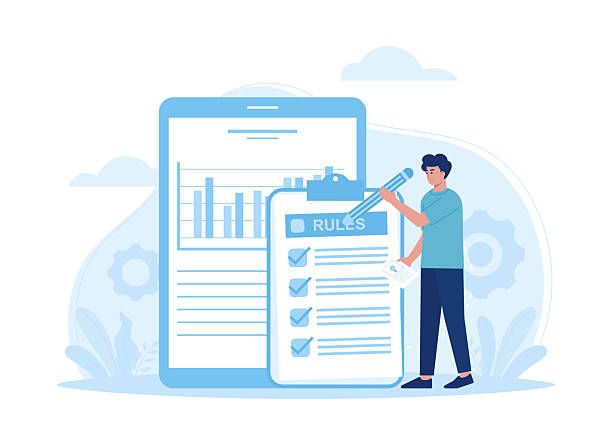
To achieve an SEO-optimized website design, adhering to several specialized principles is essential.
The first and most important principle is selecting the correct website architecture.
A logical and hierarchical structure that search engines can easily crawl and index is crucial.
This includes using clear navigation, XML sitemaps, and friendly URL structures.
The second principle is optimizing site loading speed.
Both users and search engines prioritize speed; slow websites receive lower rankings and provide a poor user experience.
Using CDNs, compressing images and code, and leveraging caching are some guiding solutions in this area.
The third principle is the website’s responsiveness.
With the increasing use of mobile devices to access the internet, Google also places significant emphasis on mobile-first design.
Your site must function well on all devices with different screen sizes.
The fourth principle is the correct use of Title Tags and Meta Descriptions.
While these elements do not directly influence ranking, they play a significant role in the Click-Through Rate (CTR) from search results.
Title tags should contain the page’s primary keyword, and meta descriptions should provide an engaging and compelling summary of the page’s content.
Adhering to these principles during the design process forms the foundation of a successful and search engine-optimized website.
On-Page SEO Considerations in Design
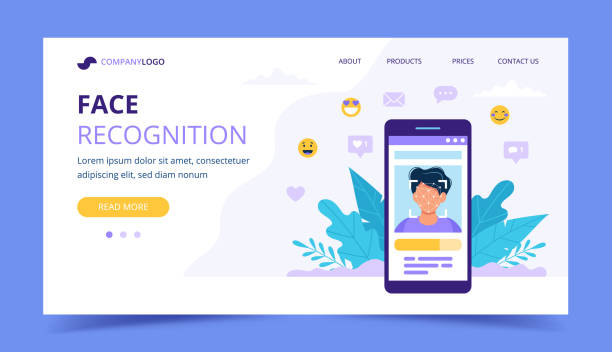
On-page SEO refers to a set of actions performed directly on the content and code of a web page to improve its ranking in search engines.
In SEO-optimized website design, there are several key considerations for on-page SEO.
The first is keyword selection and distribution.
Keyword research is the foundation of on-page SEO; you need to find keywords that your target audience is searching for and then naturally incorporate them into your content.
Excessive use of keywords (keyword stuffing) not only doesn’t help but can harm your site.
The second aspect is content optimization.
Your content must be high-quality, unique, and relevant.
Content length, structure (using H1, H2 headings, etc.), and internal linking play an important role in this section.
Internal links help search engines understand your site’s structure and identify the importance of different pages.
The third point is image optimization.
Images should be compressed to avoid slowing down site loading, and descriptive Alt Text should be used to help search engines understand the image content.
These analytical actions show how each component of the page can affect SEO.
To better understand these considerations, the following table provides an explanatory overview of important on-page SEO elements:
| On-Page SEO Element | Description | Importance for SEO |
|---|---|---|
| Keywords | Research and natural use in content | Foundation for attracting relevant traffic |
| Content | High quality, unique, relevant, and structured | Valued by search engines and users |
| Internal Links | Connecting related pages within the site | Helps with crawling and distributing page authority |
| Images | Compression and use of Alt Text | Improves site speed and content understanding by engines |
Technical SEO Aspects for a Well-Designed Site

Alongside on-page SEO, technical aspects play a very important role in SEO-optimized website design.
These aspects relate to how search engines interact with your website and are mostly invisible to the end-user but are crucial for site ranking.
Technical SEO includes various items, among the most important of which is the robots.txt file.
This file tells search engines which parts of your site they can crawl and which parts they should not see.
Incorrect use of this file can lead to important pages not being indexed.
The next item is XML Sitemaps.
These sitemaps provide search engines with a list of all important pages and files on your website, helping them better understand your site’s structure and find new pages faster.
The use of an SSL certificate (HTTPS) is also a necessity today.
Google has explicitly stated that HTTPS websites perform better in rankings and, in addition, ensure user security. Managing 404 errors and 301 redirects are other technical points.
404 errors create a bad user experience and can lead to a loss of “link equity.”
A 301 redirect is used for permanent transfer of a page’s authority to another page and must be implemented correctly to prevent a drop in ranking.
Also, using structured data (Schema Markup) helps search engines better understand your content and display it in a richer form in search results, which is called Rich Snippets.
Proper implementation of these technical elements provides a powerful infrastructure for your SEO success.
Is your company’s website not as professional and trustworthy as it should be? With professional corporate website design by Rasaweb, create an online presence that reflects your credibility and attracts more customers.
✅ Building a powerful and professional image for your brand
✅ Converting visitors into real customers
⚡ Get a free consultation now!
Content Strategy for SEO-Driven Design
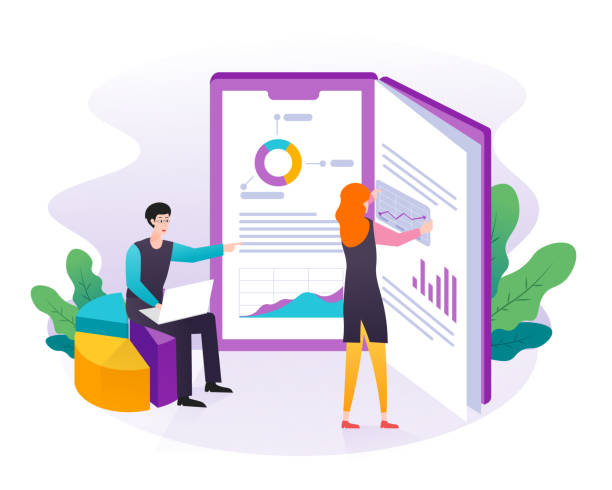
Content is king; this statement holds true more than ever in the world of SEO.
An SEO-optimized website design will not succeed without high-quality and strategic content.
Content strategy for SEO involves producing content that is not only optimized for search engines but also meets user needs and provides them with value.
The first step in this strategy is understanding user intent (Search Intent).
Are users looking for information? Do they want to buy something? Or are they looking for a specific solution? Your content should address these needs.
Producing thought-provoking content that encourages user interaction, such as research articles or surveys, can increase user retention rates and send positive signals to search engines.
Also, longer and more comprehensive content generally performs better, as it can cover a wider range of keywords and be recognized as an authoritative source.
Using various content formats such as blog posts, videos, infographics, and podcasts can enrich the user experience and help attract different audiences.
Your content should be regularly updated.
Search engines love fresh content, and this helps you remain competitive in search results.
Additionally, entertaining and creative content can increase social sharing rates, which indirectly affects SEO.
The ultimate goal of content production should be to build trust and authority in your specialized field so that both users and search engines recognize you as a reference.
This approach literally guarantees sustainability in high rankings.
The Role of User Experience (UX) in Website SEO

Although SEO and User Experience (UX) seem like two separate disciplines, in reality, they have a deep and interconnected relationship.
A website with an SEO-optimized website design cannot achieve full success without an excellent user experience.
Google increasingly emphasizes UX-related factors such as Bounce Rate, Dwell Time, and Click-Through Rate (CTR) in Search Engine Results Pages (SERP).
If users leave your site immediately after entering or spend little time on it, this sends a negative signal to search engines that your content is not relevant or high-quality.
Attractive visual design and intuitive navigation encourage users to stay and explore more of your site.
Clear Calls-to-Action (CTAs) and simple form pages facilitate user processes.
Providing a seamless and enjoyable experience increases the likelihood of users returning and converting into loyal customers.
Also, website accessibility, meaning designing the site to be usable by people with disabilities, is not only an ethical principle but can also positively impact SEO.
Tools like Google PageSpeed Insights can provide valuable guidance for improving UX and site speed.
In summary, designing a website that is both user-friendly and search engine-friendly is the key to sustainable online success.
This explanatory approach shows how investing in UX directly helps improve your SEO.
Mobile-First Design and Its Impact on SEO

Given that most internet searches today are conducted via mobile devices, the Mobile-First Design approach is no longer an option but a necessity for any SEO-optimized website design.
Since 2018, Google has considered this approach as a primary ranking factor and first checks your site’s mobile version for indexing and ranking.
This means that if your site is not optimized for mobile, even if it performs excellently on desktop, it will not achieve a good ranking in search results.
The important news is that this change has completely revolutionized website design and development strategies.
In mobile-first design, you first optimize the site’s design and functionality for the smallest screens (mobile) and then gradually expand it for tablets and desktops.
This approach ensures that the user experience on mobile devices is flawless and that page loading speeds on these devices are optimized.
Important factors such as button size, font readability, spacing between elements, and easy clickability of links are crucial on mobile.
Also, avoiding intrusive pop-ups that disrupt the mobile user experience is a technical point in this area.
To ensure your site’s mobile compatibility, tools like Google Mobile-Friendly Test are very useful.
The table below shows the key differences between traditional responsive and mobile-first approaches:
| Feature | Traditional Responsive Design (Desktop-First) | Mobile-First Design |
|---|---|---|
| Design Starting Point | Large desktop screen | Small mobile screen |
| Content Priority | All content for desktop, then adjust for mobile | Essential content for mobile, then add for desktop |
| Impact on SEO | May perform poorly in mobile SEO | Optimized for Google’s mobile-first indexing |
Measuring Success and Data Analysis in SEO

After implementing an SEO-optimized website design, the next step is measuring and analyzing its performance.
SEO is an ongoing process, and to ensure the effectiveness of implemented strategies, data must be regularly monitored.
Tools such as Google Analytics and Google Search Console are among the most essential tools for any SEO specialist or website owner.
Google Analytics provides detailed information about user behavior on your site; including the number of visitors, most visited pages, time spent on site, bounce rate, and traffic sources.
Using this data, you can determine which parts of your site are performing well and which parts need improvement.
For example, if a specific page has a high bounce rate, it may indicate irrelevant content or a poor user experience.
Google Search Console also provides vital information about how Google interacts with your site, including keywords users used to find your site, crawl errors, indexing status, and inbound links.
This analytical information helps you identify and fix technical SEO issues and discover new opportunities to improve rankings.
Additionally, monitoring keyword rankings and comparing them with competitors provides valuable educational insights for fine-tuning future strategies.
This continuous monitoring not only helps you stay on the right track but also reveals new opportunities for the growth and development of your online business.
Are you tired of your company’s website not meeting your expectations? With Rasaweb, design a professional website that showcases the true face of your business.
✅ Increased attraction of new customers and sales leads
✅ Increased credibility and trust in your brand among your audience
⚡ Get a free website design consultation now!
Common Mistakes in Website Design and How to Avoid Them

On the path to achieving an SEO-optimized website design, there are some common mistakes that can nullify your efforts.
Understanding and avoiding these errors is crucial for long-term success.
One of the most common mistakes is neglecting keyword research.
Without a proper understanding of the keywords your target audience is searching for, your content cannot be properly optimized and will not attract relevant traffic.
Another mistake is focusing solely on keywords and ignoring content quality.
Producing weak or copied content not only provides no value to users but is also penalized by search engines.
Your content must be authoritative, comprehensive, and unique.
Lack of mobile optimization is also a major error, given that Google has now adopted a mobile-first approach.
A site with a poor mobile user experience will suffer a drop in overall rankings.
Inadequate or absent internal linking is also a common mistake.
Internal links help distribute authority throughout your site and assist search engines in understanding your website’s structure.
Additionally, slow site loading speed is a major deterrent.
Users abandon slow websites, leading to high bounce rates and negative signals for SEO.
Finally, neglecting SEO performance analysis and monitoring means not knowing the strengths and weaknesses of your strategy.
Continuous monitoring with tools like Google Analytics and Search Console provides comprehensive guidance for future improvements.
Avoiding these mistakes paves the way for a powerful website and high rankings.
The Future of SEO-Optimized Website Design and Emerging Trends
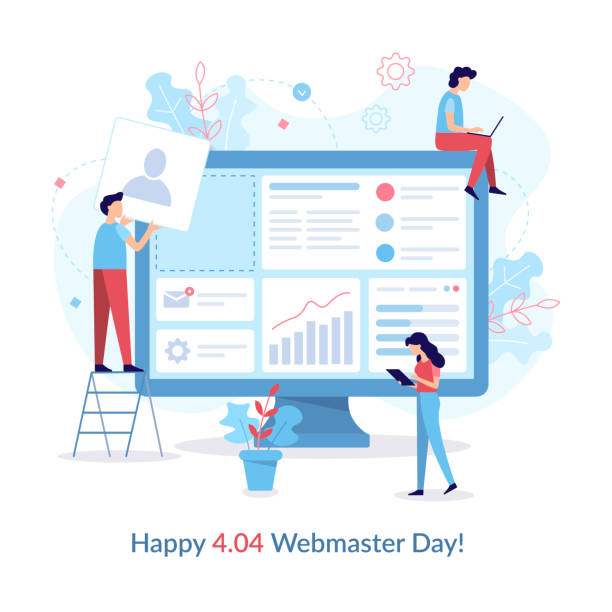
The field of SEO and web design is constantly evolving, and to maintain success, one must keep pace with emerging trends.
SEO-optimized website design in the future will increasingly focus on user experience, artificial intelligence, and voice search.
One of the most important future trends is optimizing for voice search.
With the increasing use of voice assistants like Siri, Alexa, and Google Assistant, how users search has changed.
Voice searches are typically longer and more conversational, so your content must be optimized to answer these types of queries.
Producing question-provoking content and providing precise, concise answers to common questions will become increasingly important.
The second trend is the growing role of artificial intelligence and machine learning (like Google’s RankBrain algorithm) in understanding and ranking content.
This means a greater emphasis on high-quality, relevant, and useful content that genuinely answers user needs, rather than merely being filled with keywords.
Optimizing for Core Web Vitals (which include loading speed, interactivity, and visual stability) will also remain highly important.
These metrics are directly related to user experience, and Google places significant emphasis on them.
Also, video and interactive content will play a more prominent role, as users seek more engaging ways to receive information.
Finally, E-A-T (Expertise, Authoritativeness, Trustworthiness) will continue to be a fundamental factor for ranking.
For a website moving towards SEO-optimized design, it must always strive to produce reliable content and build a credible brand to remain a leader in future competition.
Frequently Asked Questions
| Question | Answer |
|---|---|
| What is SEO-optimized website design? | SEO-optimized website design means designing and coding a website that is technically, content-wise, and structurally optimized so that search engines can easily crawl, index, and assign it a higher rank in search results. |
| Why is SEO-optimized website design important? | Its importance lies in increasing website visibility in search engine results (like Google), attracting more organic traffic, improving user experience, and ultimately increasing conversion rates (sales or desired actions). |
| What are the most important technical SEO factors in website design? | High loading speed, responsiveness (Mobile-Friendly), proper URL structure, use of SSL certificate (HTTPS), XML sitemap, and robots.txt file. |
| What is the impact of Responsive Design on SEO? | Since a large portion of searches are done via mobile, Google prioritizes responsive sites. Responsive design improves user experience and reduces bounce rate, both of which help SEO. |
| How does site loading speed affect SEO? | Loading speed is an important ranking factor for Google. Slow sites lead to a bad user experience, increased bounce rate, and a decrease in search result rankings. |
| What is the role of URL structure in SEO? | Short, readable URLs that include relevant keywords help both users and search engines better understand the page’s topic, and this positively impacts SEO. |
| What is the importance of using Title Tags and Meta Descriptions in SEO design? | These tags provide information about the page content to search engines and users. Optimizing them with appropriate keywords increases Click-Through Rate (CTR) and improves content understanding by search bots. |
| What is the importance of Image Optimization in SEO? | Reducing image size to increase site speed, using descriptive Alt Text (including keywords) to describe the image to search engines, and increasing the chance of appearing in Google Image Search. |
| How does Internal Linking help SEO? | Internal linking helps search engines better understand the site structure, distributes authority (PageRank) across the site, and directs users to related pages, which improves user experience and reduces bounce rate. |
| What is the relationship between User Experience (UX) and SEO? | Google values sites that provide a good user experience. Attractive visual design, easy navigation, readable content, and high speed all contribute to improving UX, which in turn leads to a lower bounce rate, increased time on site, and positive signals to search engines. |
And other advertising services of Rasaweb Advertising Agency
Smart Marketplace: A fast and efficient solution for campaign management focusing on marketing automation.
Smart Direct Marketing: A creative platform for improving online growth with intelligent data analysis.
Smart Google Ads: Revolutionize digital branding with the help of Google Ads management.
Smart Advertising Campaign: Designed for businesses seeking to manage campaigns through attractive UI design.
Smart Marketing Automation: An effective tool for increasing website traffic using real data.
And over hundreds of other services in internet advertising, advertising consultation, and organizational solutions
Internet Advertising | Advertising Strategy | Advertorials
Sources
Specialized SEO and Website Optimization Articles
Step-by-Step Website Design Tutorial
Comprehensive On-Page SEO Guide
The Impact of Website Loading Speed on SEO
? For a leap in the digital world and achieving big goals, Rasaweb Digital Marketing Agency is with you. If you are looking for professional services including personal website design and innovative marketing strategies, contact us to take your business to the top.
📍 Tehran, Mirdamad Street, next to Bank Markazi, Kazerun Jonoubi Alley, Ramin Alley No. 6

